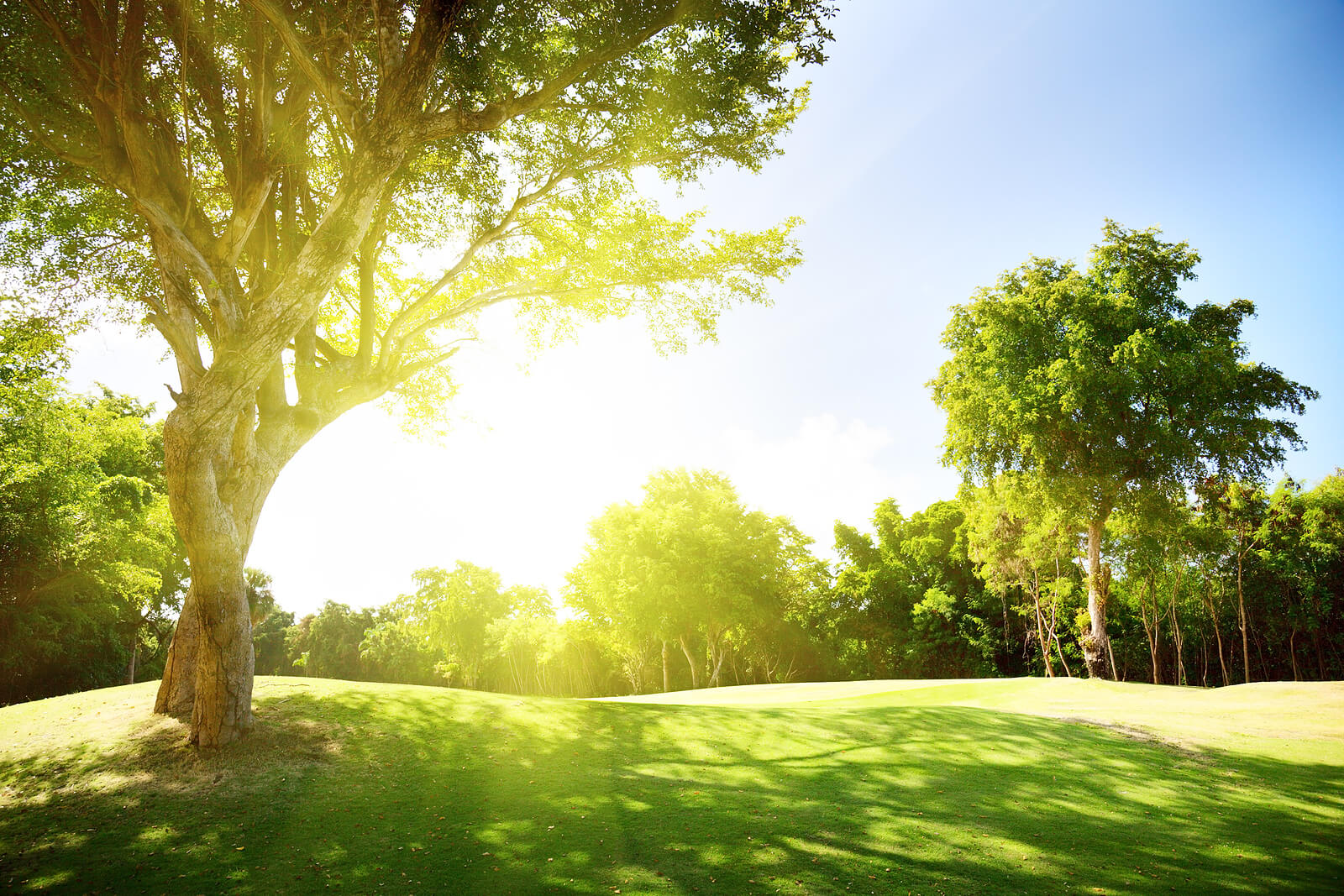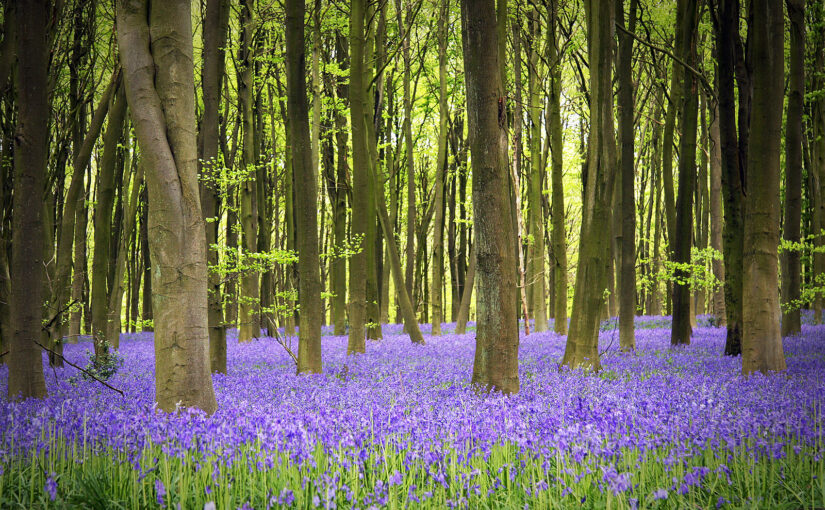As society evolves, so do our perspectives on life’s inevitable conclusion. Mourners and pre-planners have recently expanded their horizons beyond the conventional options of cremation and traditional burial.
This shift reflects a growing awareness of our environmental impact, extending to how we bid farewell to this world.
We’ve previously touched on eco-friendly post-life choices, so join us again as we explore one of those options in detail — woodland burials. With 10% of UK adults expressing a desire for a natural burial, this sustainable alternative resonates with an increasing number of people.
Let’s dig deeper into woodland burials and uncover why they capture the interest of so many environmentally conscious citizens.
What is a woodland burial?
A woodland burial is sometimes referred to as a natural burial. It is any burial located in a natural environment, like woodland, species-rich meadows, orchards, or sustainably managed farmland.
The distinguishing feature of these burials is the absence of anything that would impede the natural decomposition process, allowing the body to return to the earth harmoniously.
As you might expect, a woodland burial is a natural burial within a wooded area –— and that’s what we’ll focus on for now.
What is a woodland burial site?
The landscape typically blends seamlessly with nature in natural burial grounds, and woodland burial sites often resemble any other untouched patch of woodland.
Unlike monumental cemeteries, woodland burial sites often lack visible markers, allowing nature to reclaim its course undisturbed. While gravestones are frequently absent, some sites permit or provide natural markers such as trees, shrubs, or small, flat stones engraved with the deceased’s name and dates.
Inventive on-site memorials like bird and bat boxes or trees planted elsewhere serve as subtle tributes to the deceased at other burial grounds.
If you value knowing the exact location of a loved one’s resting place, visiting the burial site before purchasing a plot is advisable.
Woodland burial sites are not as widespread as traditional cemeteries, and you may have to travel further to visit a plot. However, the decision to forego visible markers underscores their natural beauty.
What happens at a woodland burial?
Woodland burials transcend typical funeral customs, offering mourners the freedom to craft a ceremony reflective of the deceased’s personality and the natural surroundings.
There are no rigid traditions or religious constraints to these services, but they can be religious or spiritual, and most sites are open to everyone, whether agnostic or religious.
Each woodland burial site has guidelines, mostly centred on site preservation. The regulations often impose minimal restrictions on ceremony planning, fostering an environment of flexibility and creativity.
Some sites feature small buildings for mourners to gather for a service. Others embrace the beauty of the outdoors, providing gazebos or yurts where farewells can be bid regardless of weather conditions.
Woodland burial ceremonies are characterised by their intimate and often informal nature. Observing the rustling leaves and dappled sunlight, family and friends find solace, paying homage to the departed authentically and deeply personally.
A service typically includes heartfelt reflections, shared memories, and symbolic rituals.
What are the benefits of a woodland burial?
Natural burial costs less than monumental burial. This is because it forgoes the expenses associated with embalming, elaborate coffins, and standard funeral extras. Land is also limited for traditional burial, which pushes the cost up.
Beyond money, the primary advantages of woodland burial lie in its environmental impact, making it an enticing option for people committed to preserving the planet.
Cremation remains the predominant choice in the UK, but each cremation creates 245kg of carbon. Woodland burial offers a sustainable alternative, enabling the deceased to maintain a low carbon footprint in death.
Standard burial releases harmful chemicals into the soil, including embalming fluid. Woodland burial prevents this by abstaining from embalming practices and burying only coffins made from natural, biodegradable materials.
The natural burial approach minimises environmental damage and mitigates the risks to human health, wildlife, and plant life posed by toxic substances.
Unlike graveyards, where land becomes unusable once the site is full, woodland burial grounds retain natural beauty and functionality. They seamlessly integrate with surrounding woodlands, ensuring continued ecological balance and biodiversity.
How to arrange a woodland burial in the UK
Arranging a woodland burial in the UK requires careful consideration and research, as not all funeral directors facilitate such services.
Given the increasing popularity of natural burials, the number of local and national funeral directors offering woodland burial as a green alternative is rising. Verifying this option with your chosen funeral director is essential.
Consulting a local green funeral director is advisable for environmentally conscious funeral services. These specialists are well-versed in sustainable burial practices and can provide guidance tailored to your preferences and values.
How much does a woodland burial cost in the UK?
Woodland burials are typically a more economical option than regular cemetery interments. The total expense can vary depending on several factors, including:
- your chosen funeral director
- the selected burial site, encompassing burial and gravedigging fees
- your preferred biodegradable coffin or shroud
- additional services like staff transportation and order of service booklets
- the specific day of the funeral.
For instance, a single plot is priced at £1,600 at Rose Hill Burial Ground in Huddersfield. This cost covers the plot exclusively and does not include other funeral expenses, such as the coffin or additional services.
Where can I have a woodland burial in the UK?

There are over 270 natural burial sites in the UK, with a significant portion within woodland.
These public burial sites offer peaceful and environmentally conscious settings for those seeking a woodland burial.
Here are some local woodland burial sites in Yorkshire and nearby
- Bradfield View — Woodland Burial Ground, Riggs High Road, Stannington, Sheffield, S6 6DA. This site boasts panoramic views overlooking Bradfield and the picturesque Peak District moorlands. Graves are commemorated with engraved plaques, with the option to plant a memorial tree elsewhere. Families can also honour their loved ones with a memorial bench.
- Brocklands Woodland Burial Site — Cappleside House, Rathmell, Settle, North Yorkshire, BD24 0LJ. This site offers a serene and scenic rural setting for those seeking a natural burial. Here, graves are uniquely marked by trees chosen by the families, creating a lasting tribute.
- Gertrude’s Pasture — 7 Knox Road, Harrogate, HG1 3EF. A three-and-a-half-acre natural burial site nestled near the towns of Knaresborough and Harrogate.
- Hope Woodland Cemetery — Green Drive, Near Kilnhill Bridge, Hope Valley, S33 6ZE. A wooded burial ground located within a monumental cemetery.
- Lawnswood Cemetery Green Burial Ground — Otley Road, Adel, Leeds, LS16 6AH. A unique and environmentally conscious option within the confines of a traditional cemetery setting.
- Rose Hill Burial Ground — 161 Birkby Hall Road, Huddersfield HD2 2BS. A natural burial ground distinguished by its green slate horizontal headstones. Floral tributes are encouraged here, fostering a calm atmosphere of remembrance and reflection. Visitors also have access to on-site amenities, including a coffee shop, bistro, and funeral chapel, providing comfort and support during times of mourning.
- Southfield Lane Cemetery — Southfield Lane, Rufforth, YO23 3QB. While floral tributes are discouraged here, a memorial wall near the entrance of the natural burial ground allows for commemorative plaques to honour loved ones.
- Stonefall Woodland Cemetery — Wetherby Road, Harrogate, HG3 1DE. This woodland cemetery is inside Stonefall Crematorium and Cemetery and provides a tranquil grave setting. Please note: this natural burial ground is exclusively reserved for residents of Harrogate Borough Council.
- Tarn Moor Memorial Woodland — Brackenley Lane, Skipton, BD23 3LA. A peaceful and attractive final resting place. Graves are unmarked yet meticulously plotted, ensuring you always know the precise location of your loved one. The setting is breathtaking, with sweeping vistas of the Yorkshire Dales and beyond. Please note: burial plots for children under 12 are provided free of charge.
- Wisewood Woodland Cemetery — Loxley Road, Loxley, Sheffield, S6 6RR. This woodland burial ground sits inside a standard cemetery with stunning views of the beautiful Loxley Valley. Each grave is adorned with a modest stone marker and offers the option of planting a native tree, adding to the natural beauty of the surroundings.
With the landowner’s permission, individuals also have the option of being buried on private land or even within their own gardens, provided local regulations and guidelines are adhered to.
If eco-friendly end-of-life options are of interest, continue your education with our guide to water cremation.
